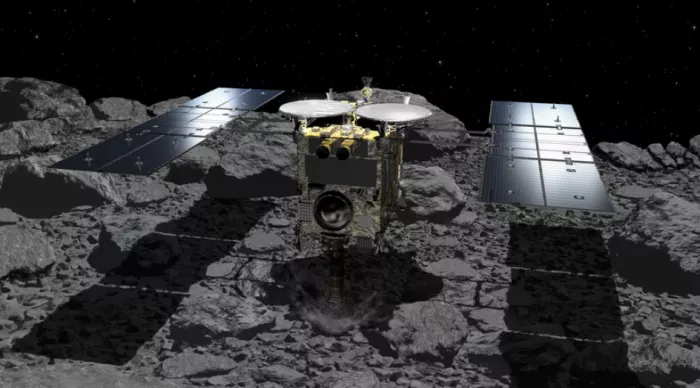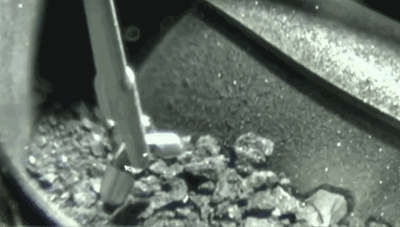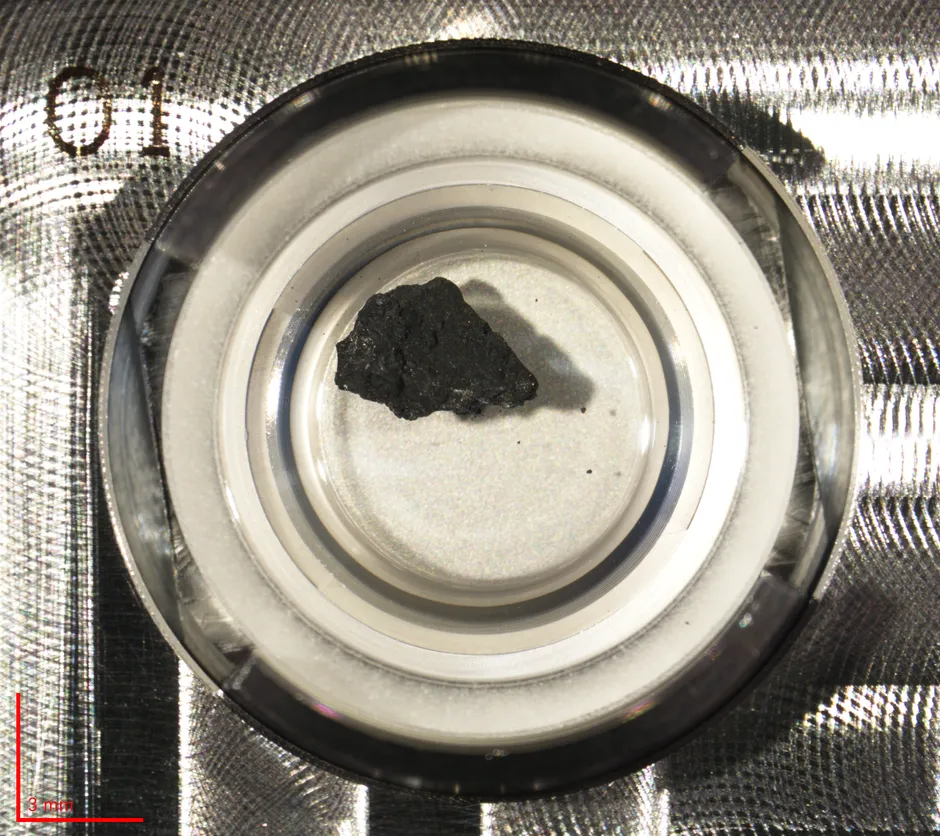According to CNET, when Japan's "falcon 2" spacecraft threw the asteroid sample in its treasure box to the earth in December, 2020, the scientists and engineers who led the sample home burst into warm applause. After an eight year mission to ryugu, an asteroid with a history of 4.6 billion years, fragments of this ancient rock were finally sent to earth. Now, about 18 months later, the box has been opened and its "treasure" has been comprehensively analyzed scientifically. The Japanese Space Agency (JAXA) has a premonition that the precious materials in the hayabusa-2 sample capsule will have great scientific value -- and preliminary chemical analysis shows how great the samples of the agency are**

In a study published in the journal Science on June 9, JAXA scientists conducted the first in-depth evaluation of the samples recovered from the "Dragon Palace" after returning to the earth.
"We found that 'Dragon Palace' has the freshest CI chondrite in history," said Shogo Tachibana, chief scientist of JAXA responsible for preliminary sample analysis. This means that the materials recovered from the "Dragon Palace" are the most primitive materials that human beings can analyze on the earth. They provide a gateway to the very early days of the solar system, when the sun was a young star and planets were just beginning to form. Although the study released on Thursday is an important milestone in understanding the Dragon Palace, it is only the first step in understanding the solar system and our place in it.
Japan's "falcon 2" mission was launched in 2014, embarking on the journey of collecting samples from the small planet "Dragon Palace". This asteroid belongs to the most common category in our solar system, i.e. type C (carbonaceous) rock asteroid, which is shaped like a rotating top. Its orbit around the sun exists outside Mars. Some scientists believe that these types of asteroids have transported raw materials for life to the earth, which is why JAXA wants to investigate the Dragon Palace and steal some rocks from its surface.
After a four-year journey, Falcon 2 rendezvous with space rocks, and then in 2019, the spacecraft made two short contacts on the asteroid, collected samples and stored them in a special sample cabin. The sample cabin landed in the Australian inland in 2020, and its precious cargo has been carefully managed since then.
The two landings of "Dragon Palace" obtained 5.4 grams of material from the surface and underground of the small planet. These materials are in the form of pebbles and rocks and vary in size up to about 0.4 inch. The research report released on June 9 took a very small number of samples -- about 2% of the total -- to study the chemistry and structure of the asteroid and draw some conclusions about how it formed and transformed in its life. This requires the use of powerful electron microscopes and spectrometers, which can provide details of the chemicals in the object according to the way the object reflects light.

Scientists concluded that the "Dragon Palace" was probably formed after a huge space rock in the early solar system was crushed. The ejected material eventually formed what we know as the revolving top asteroid - "Dragon Palace". According to the analysis, the impact may have occurred about 2million to 4million years after the formation of the solar system. Based on the way these samples were altered by water, scientists believe they came from about 5million years after the formation of the solar system.
"Everything happened very, very early in the formation of the solar system," Tachibana said
Why meteorites are important
To understand the importance of these samples, it is best to look at the rock fragments falling to the earth. Scientists call these meteorites. Meteorites can be divided into different groups according to their composition and chemical composition. The rarest type of meteorite that scientists have ever seen is called "Ci chondrite" -- since the 19th century, we have only seen five such meteorites fall on the earth. One of the most famous was the fall of orgueil in France in 1864.
Ashley king, a leading scientist of the Department of mineral and Planetary Sciences of the British Natural History Museum, said: "unlike other meteorite groups, the chemical composition of CI chondrites has not evolved or modified. They can tell us about the original composition of the solar system."
In short, CI chondrites are the most primitive rocks that researchers have found. They come from an era when the solar system was just beginning to form. But the rocks that reach the earth are changed by our atmosphere and the journey to the ground. When they enter the atmosphere, they are heated to form new minerals and chemicals. Then, when they fall, they are changed by humidity and interaction with water.

This has always been a difficult problem for meteorologists, that is, scientists specializing in meteorites, because - until the "Dragon Palace" - researchers have not been able to know what the chemical composition of an asteroid is. JAXA's analysis changed all this and shocked some meteorite scientists.
Gretchen benedix, a planetary scientist at Curtin University in Western Australia, pointed out: "I am basically in awe of this research and find it difficult to express it in normal language. How interesting and important it is to provide the source of this type of meteorite for future research."
In a word, scientists can now touch the earliest era of our solar system, which has a profound impact on future research. JAXA scientists have explored a meteorite that has never reached the earth, so it has never been changed by the conditions on our planet. This is an immortal achievement.
King said, "the Dragon Palace sample is the most primitive extraterrestrial material with chemical properties available for research, and will lead to new breakthroughs in our understanding of the origin and evolution of planetary systems."
For JAXA scientists, this first paper is just the beginning. In the next few months, it is expected that more details about the "Dragon Palace" sample will be revealed, revealing details about the magnetism of the rock, how it is affected by space weathering, and its exposure to solar wind and cosmic rays.
But JAXA is not only interested in "Dragon Palace". NASA obtained 10% of the returned samples in december2021 and will conduct its own analysis on these samples, hoping to compare this discovery with their own asteroid sample return mission, Osiris Rex, which visited the asteroid Bennu in 2020. The mission is expected to return the samples to earth in September next year.
What is waiting for scientists to discover? The possibilities are infinite. Just this week, it was reported that JAXA also found amino acids in the Dragon Palace - "a component of life". A complete scientific report on the amino acids in the "Dragon Palace" has not yet been released, but this discovery adds to the concept that organic compounds may have been transported from outer space to the earth.
As scientists study the samples from "Dragon Palace" and Bennu, scientists' vague understanding of the earliest time in the history of the solar system will gradually become the focus.